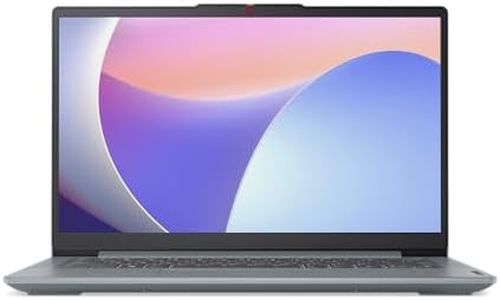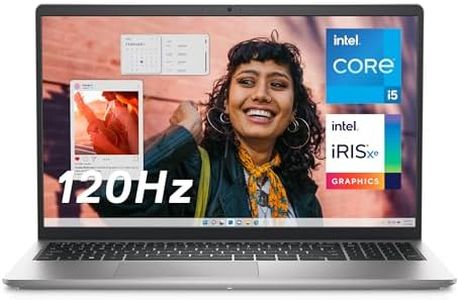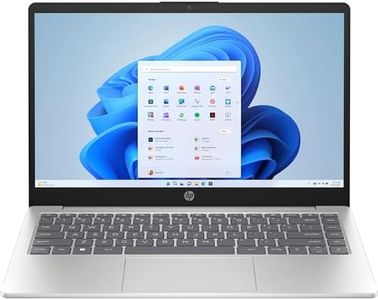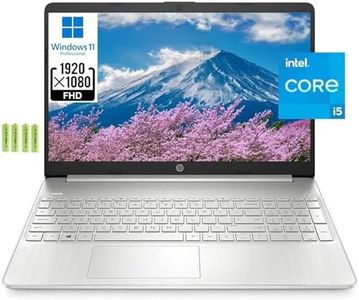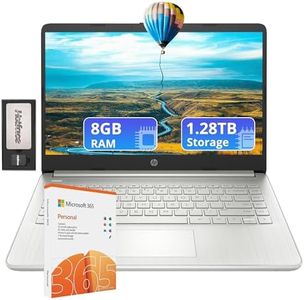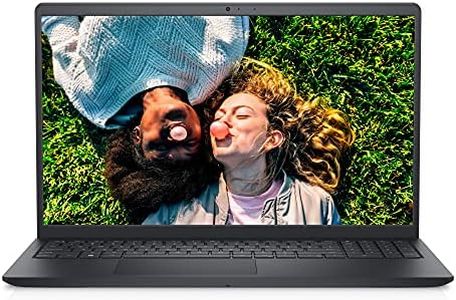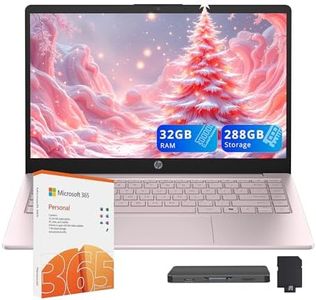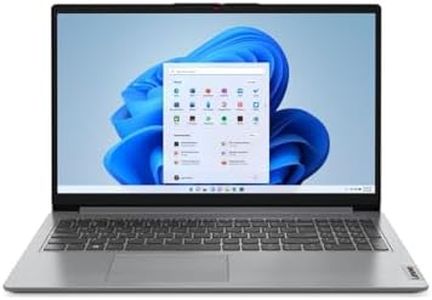We Use CookiesWe use cookies to enhance the security, performance,
functionality and for analytical and promotional activities. By continuing to browse this site you
are agreeing to our privacy policy
10 Best Affordable Laptops
From leading brands and best sellers available on the web.Buying Guide for the Best Affordable Laptops
Choosing an affordable laptop is all about finding the right balance between price, performance, and your everyday needs. Before you start browsing, think about what you’ll mainly use the laptop for—whether it’s simple tasks like web browsing and email, more demanding activities like photo editing, or schoolwork. The goal is to match the laptop’s capabilities to your most common tasks, so you don’t end up with a device that feels slow or underpowered. It’s important to understand the main specifications, as these will guide you toward a laptop that feels fast, lasts a decent amount of time on a charge, and fits comfortably into your daily routine.Processor (CPU)The processor, also known as the CPU, is like the brain of the laptop. It determines how quickly your laptop can handle programs and multitasking. For basic tasks like web browsing, word processing, and streaming videos, most entry-level CPUs will do the job fine. Processors come in different levels—lower-end (like Intel Pentium, Celeron, or basic AMD chips) are good for very light use, while mid-range (such as Intel Core i3 or Ryzen 3) offer noticeably better performance for slightly more demanding apps. If you plan to do a bit of everything, aim for at least a mid-range CPU so your laptop stays quick enough over time.
Memory (RAM)RAM is your laptop's short-term memory, which helps it run several programs at the same time without slowing down. If you often have multiple browser tabs open, or switch between apps, more RAM is better. Around 4GB of RAM is the bare minimum for basic use, like document editing and web browsing, but 8GB is much smoother for regular multitasking or casual media editing. Picking the right amount depends on how much you multitask: if you run just a few programs at once, 4GB may be okay; for more comfort and future-proofing, 8GB is highly recommended.
Storage (HDD, SSD, eMMC)Storage is where your files, programs, and the system itself are kept. The type of storage matters: SSDs (Solid State Drives) are much faster than traditional HDDs (Hard Disk Drives), so they help your laptop start up quicker and load files faster. eMMC storage is commonly found in budget laptops and is decent for very basic tasks, but is slower and not ideal for heavy use. For smooth everyday operations, even a smaller SSD (like 128GB or 256GB) is better than a larger but slower HDD. Choose based on your storage needs—if you save a lot of photos, music, or videos, lean toward more space, but always prefer an SSD if possible.
Display Size and ResolutionThe display size affects how portable your laptop is and how comfortable it feels to use for long periods. Smaller screens (11–13 inches) are light and easy to carry, ideal if you’re often on the go, but may feel cramped for long sessions. Mid-sized screens (14–15.6 inches) offer a balance between portability and comfort, making them a good general-purpose choice. Large screens (17 inches) are best for those who mostly work at a desk and want more space for multitasking. Resolution indicates how sharp the screen will look; Full HD (1920x1080) is standard and great for reading, videos, and everyday tasks.
Battery LifeBattery life shows how long your laptop can run on a single charge. Laptops can last anywhere from 4 to over 12 hours, depending on their hardware and your usage patterns. If you plan to use the laptop mostly at home, battery life is less critical, but for students or people who work in cafes or on the go, aim for at least 6–8 hours of real-world battery life to avoid scrambling for a charger during the day. Check for average battery duration in reviews or the specs—it’s wise to select a laptop that matches your typical daily routine.
Ports and ConnectivityPorts are the physical connections like USB, HDMI, and headphone jacks, while connectivity covers Wi-Fi standards and Bluetooth. Think about how many devices you regularly plug in: if you need to connect external monitors, USB drives, or printers, make sure the laptop has enough and the right kinds of ports. Modern laptops often include a mix of USB-A and USB-C, but some affordable models reduce the number to keep costs low. Good Wi-Fi (preferably Wi-Fi 5 or 6) ensures smoother internet browsing and video calls, while Bluetooth is useful for headphones or other wireless devices.
Build Quality and KeyboardBuild quality affects how sturdy and long-lasting a laptop is, while the keyboard is important for comfort, especially if you type a lot. Cheaper laptops may use more plastic, making them less robust if you travel often. Look for reviews mentioning how solid (or flimsy) a laptop feels; a comfortable keyboard is especially important for students or anyone who writes frequently. If possible, try typing on a similar model in a store to check if the keys feel too stiff, too soft, or cramped for your hands. For regular typing or carrying your laptop around, prioritize better build and comfortable input.

